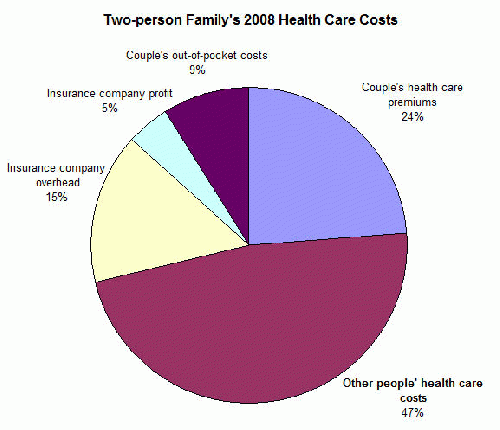The $1,400 in co-pays went directly to healthcare providers, of course. The rest went to Wellpoint.
And what did Wellpoint do with the money?
The insurance company paid $3,805 directly to the couple's healthcare providers on their behalf (so the couple's actual total healthcare costs in 2008 were $5,205). The company also paid $3,215 to itself -- $2,472 for administrative costs and $743 in profit (based on figures in Wellpoint's 2008 annual report).
The rest of the money -- $7,555 -- was used to pay for other people's health care costs. All this is shown in the pie chart.
So, of the couple's $15,975 in total health care spending, just 33% went to their own direct medical care. Another 20% went to the insurance company for its own uses. And a whopping 47% subsidized other people's health care costs.
Imagine that: this couple spent more money on other people's healthcare than they did on their own.
How could that be? Easy: that's the way insurance works. When the couple bought health insurance, they put both their money and their risk of needing health care into a pool. In 2008, neither one got sick -- lucky them -- but somebody else in the pool did. And the couple's premiums helped to pay for that somebody else's health care.
(Note: You can view every article as one long page if you sign up as an Advocate Member, or higher).





